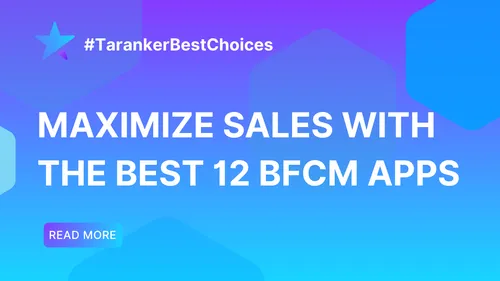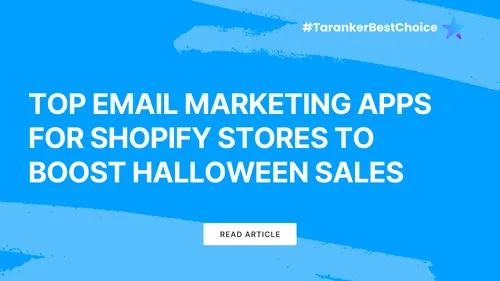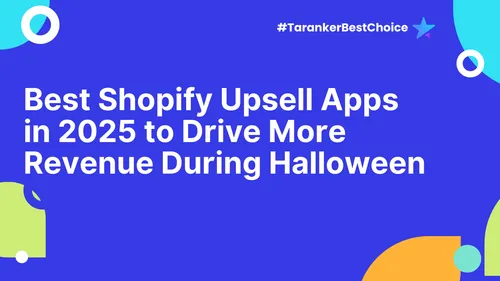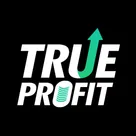Introduction:
Most Shopify entrepreneurs are flooded with data—but struggle to make it actionable. According to a recent study, over 70% of ecommerce businesses that failed to meet their growth targets had no structured KPI system in place. On the other hand, companies that actively tracked and optimized KPIs were 2.5x more likely to achieve their strategic goals.
A solid KPI framework doesn’t just help you measure success—it helps you understand what to fix, where to scale, and how to get there faster. In this article, we’ll show you how to build a data-driven KPI system that works for your Shopify store.

1. What Is a KPI Framework and Why Does It Matter?
1.1. Definition and Core Elements of a KPI Framework
A KPI framework is not just a list of performance metrics. It's a structured system that connects your business goals to specific indicators, tools, tracking methods, and review processes. A complete framework includes:
-
Business objectives (e.g., increase revenue, reduce CAC): These are the core goals that define what success looks like for your business. Without clear objectives, it's difficult to choose relevant KPIs or evaluate performance.
-
Key performance indicators: These are the specific, quantifiable metrics tied directly to your objectives. They help you monitor progress and identify where action is needed.
-
Data sources and tracking tools: Your KPI framework needs to define where the data comes from—whether it's Shopify Analytics, Google Analytics, or third-party apps—and which tools you'll use to gather and visualize it.
-
Regular review cycles: KPIs should be reviewed consistently—daily, weekly, or monthly—depending on the metric. This cadence keeps your team aligned and allows for agile responses to changes.
-
Optimization actions: A framework is only effective if it drives action. Define how insights from KPIs will lead to testing, strategy adjustments, or process improvements.
1.2. Why Shopify Businesses Need a KPI Framework
Without a framework, it’s easy to get lost in vanity metrics like page views or followers. A KPI framework ensures your team is aligned on what truly matters and avoids being distracted by noise. It enables you to identify problems more quickly—such as a sudden spike in CAC or a drop in conversion rate—so you can act before they escalate. Most importantly, it supports making smarter decisions grounded in actual performance data rather than assumptions or instincts.

2. Building Your Shopify KPI Framework Step-by-Step
2.1. Define Clear Business Objectives
Defining business objectives is the foundation of any KPI framework. Instead of working off assumptions, you clarify what success looks like in measurable terms. These goals act as the North Star that every department can align to—whether it's marketing, customer service, or operations. More importantly, clear objectives keep your team focused and motivated to achieve tangible results.
For example, rather than simply saying "grow the business," a Shopify store might define its top three objectives for the quarter as:
-
Increase total revenue by 20%
-
Improve customer retention by 15%
-
Decrease order fulfillment time by 30%
These goals are not only motivating but also create a direct link to performance metrics that matter.
2.2. Map Each Objective to Strategic KPIs
Once your objectives are in place, the next step is to identify the KPIs that will signal progress toward each goal. This is where many businesses go wrong—by choosing metrics that are either too broad, unrelated, or not actionable. When you align each business goal with a KPI, you're essentially creating a measurable roadmap to success.
Let’s break it down:
-
For revenue growth, use KPIs like Average Order Value (AOV), Conversion Rate, and Revenue Per Visitor. These show how effectively you're generating income from your traffic.
-
For customer retention, track Repeat Purchase Rate, Customer Lifetime Value (CLV), and Subscription Rate. These indicate how well you're building long-term relationships.
-
For operational efficiency, monitor Order Fulfillment Time, Stock Turnover Rate, and Cart Abandonment Rate. These highlight how smoothly your backend is functioning.
By pairing each goal with its most relevant KPIs, you ensure that every data point you track has purpose and direction.
2.3. Set SMART Targets for Each KPI
Setting SMART targets for each KPI offers a significant advantage over vague or loosely defined goals. Unlike general objectives that can be interpreted differently by each team member, SMART KPIs provide clarity, consistency, and a direct link to outcomes that impact business performance.
What makes SMART superior to other approaches is its structure. It doesn't just suggest what you want to achieve—it lays out the path to get there. With clear benchmarks and deadlines, teams stay aligned and motivated, and management can more easily identify which initiatives are driving results.
The SMART framework ensures KPIs are:
-
Specific – defines exactly what is being measured, leaving no room for ambiguity.
-
Measurable – supported by tangible data that can be tracked consistently.
-
Achievable – based on realistic expectations given your resources and past performance.
-
Relevant – directly contributes to your business priorities and goals.
-
Time-bound – attached to a deadline to ensure accountability and timely action.
Why it outperforms vague goal-setting methods: Businesses that adopt SMART KPIs are more agile in their decision-making. They can test, track, and adjust strategies with precision. For example, instead of vaguely aiming to “increase customer loyalty,” a SMART KPI might be: “Increase repeat purchase rate from 18% to 25% by the end of Q3.”
Example: A Shopify fashion store implemented this exact SMART KPI. They created a loyalty rewards program, launched personalized email flows using customer data, and sent post-purchase reminders at optimal intervals. Within three months, they surpassed their goal with a 26.3% repeat rate. More importantly, their marketing team could directly attribute the lift to the defined actions—proof that SMART KPIs not only guide success but help measure it with precision.

3. Selecting the Right Tools to Support KPI Tracking
3.1. Leverage KPI-Driven Apps to Maximize Results
To transform data into action, Shopify merchants need tools that seamlessly integrate with their operations and marketing systems. Below are five apps that not only track performance but actively support KPI optimization in key areas like fulfillment, email engagement, and ad attribution.
-
Track123 Smart Order Tracking – Ideal for stores focused on logistics KPIs like order fulfillment time and delivery transparency. This app enhances customer satisfaction with real-time branded tracking pages and also allows upsell offers on the tracking experience—turning post-purchase into a revenue channel.
-
Klaviyo Email Analytics Pro – A must-have for measuring retention KPIs such as repeat purchase rate and customer lifetime value (CLV). Klaviyo enables personalized email flows, segment performance tracking, and A/B testing to improve conversions at every lifecycle stage.
-
Parcel Panel Growth Tracker – Optimizes both delivery KPIs and post-purchase engagement. Its multilingual branded tracking page, combined with integrated upsells and analytics, supports customer experience and retention KPIs.
-
Omega Facebook Pixel Meta Feed – Capture every conversion, optimize ROAS, and use UTM for precise insights of your advertising campaign. Achieve expert-level tracking with Facebook Pixel and Conversion API to capture every signal, understand buyer behavior, and retarget ads with advanced data. Effortlessly sync and manage your catalogs, Facebook feeds while maximizing feed quality for Facebook and Instagram Ads
3.2. Build a Real-Time Dashboard to Turn Data into Action
A KPI dashboard acts as your business's control center—showing you where you're winning and where you need to pivot. Using tools like Google Data Studio or Shopify Analytics, you can build a customized, real-time dashboard that visualizes your most critical metrics across departments like Sales, Marketing, and Operations.
Here's how to set it up:
Integrate your key data sources such as Shopify, Klaviyo, Facebook Ads, and Google Analytics. This gives you a centralized view without needing to jump between platforms.
Design your dashboard to highlight high-impact KPIs relevant to your goals. For example, revenue growth KPIs (AOV, CR) for sales, retention KPIs (CLV, Repeat Purchase Rate) for marketing.
Include automated alerts or visual indicators for underperforming areas so you can act fast before they impact your bottom line.
Assign each KPI to a specific team member or department, creating accountability and ensuring nothing gets overlooked. Establish a consistent cadence for reviewing results:
-
Daily: Check key revenue and traffic metrics for immediate trends.
-
Weekly: Review ad performance, email engagement, and fulfillment times.
-
Monthly: Analyze broader trends like CAC, inventory turnover, and customer retention.
When done right, a KPI dashboard is more than a report—it becomes a decision-making engine that empowers your team to act faster, smarter, and with greater precision.
Conclusion:
Implementing a KPI framework is not just a data exercise—it’s a growth strategy. When you define clear goals, link them to strategic KPIs, apply the SMART method, and power your analysis with the right tools, you transform raw numbers into real business results.
Shopify store owners who treat their data as a decision-making asset consistently outperform competitors who rely on intuition. With a structured approach, you're not guessing where to invest your time or money—you’re leading with clarity, focus, and confidence.
Start simple. Choose a few key objectives, align meaningful KPIs, and track them with precision. As your business evolves, your framework will too—scaling with you and unlocking new levels of performance.













